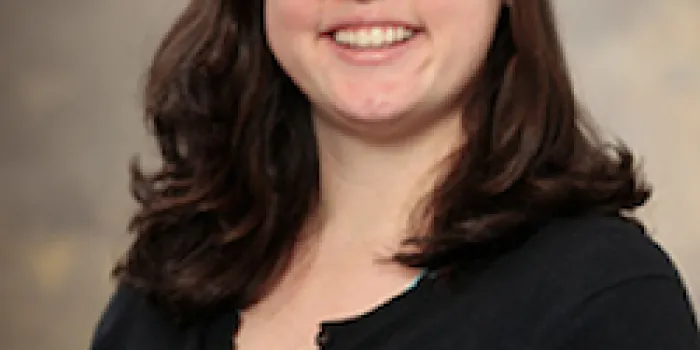HemAware is conducting a series of interviews with recipients of the NHF-Shire Clinical Fellowship. It is funded through the generous support of Shire. The objective of this grant is to increase the number of skilled clinicians committed to providing comprehensive care for individuals with bleeding and clotting disorders and to prepare recipients for academic careers.
This interview was conducted with Salley Pels, MD, assistant professor of pediatrics and associate medical director at the Yale Hemostasis Center, section of hematology-oncology in the Department of Pediatrics at Yale University School of Medicine in New Haven, Connecticut. The fellowship was funded from 2009 to 2011.
Why did you decide to study medicine?
“I was always interested in science, from a very early age,” says Pels. That led to an interest in the workings of the human body. Pels’ introduction to medicine came through her mother, who began her career as an emergency room nurse. “I always looked up to her,” she says.
What initially attracted you to hematology?
It was a “who” rather than a “what” that led Pels to pursue hematology rather than oncology, which had tugged at her heart strings. “I had the good fortune of finding a mentor who was very inspiring to me and was very passionate about the benign hematologic conditions,” Pels says. Diana Beardsely, MD, PhD, associate professor of pediatric hematology/oncology at Yale, passed away in 2010, during Pels’ fellowship. “She definitely had a great influence on me from an early standpoint.”
How did the training and mentorship you received as an NHF-Shire Clinical Fellow affect your decision to pursue clinical care and/or research in bleeding disorders?
Working with Beardsley and two other mentors at Yale, Michael Paidas, MD, and Peter Marks, MD, Pels says she received multifaceted training in dealing with patients with a variety of bleeding disorders. “Most of my exposure to the hemophilia community was through Diana, but with Michael, I was able to see how these bleeding conditions affect women throughout their life cycles,” she says.
Although Pels enjoyed her time in the lab, the influence of these three mentors confirmed her calling in the clinic. “For me, it has always been and always will be about the patients,” she says.
Are you still engaged in the clinical aspects of patient care or bleeding disorders research? In what aspect of care are you most interested?
“As associate medical director of our HTC at Yale, I am still very involved in clinical care,” Pels says. Having engaged in basic research, she has now transitioned to several clinical projects, all in early stages, some of which focus on the quality of patient care in the hemophilia population.
Did your NHF-Shire Clinical Fellowship assist in advancing your own position at your institution? Or did it serve as a building block to further your career in coagulation?
The answer, says Pels, is both. The added training through the fellowship helped solidify Pels’ expertise and experience, she says. “I’ve been able to establish myself among my hematology/oncology colleagues as someone with hemostasis and thrombosis expertise, and also within the institution as someone to go to for these kinds of questions and concerns with the patients.”
For Pels, the building-block aspect has to do with involvement on a larger scale. She is on the board of directors of the Hemophilia Alliance and on the quality improvement committee with ATHN. “Having been an NHF-Shire fellow, I’ve been able to use that in a couple of different ways,” says Pels. “It has certainly helped me get to where I am today.”
Where do you think bleeding disorders research and clinical care may be headed in the near future? In the next decade?
This is an exciting time for new products entering the market in the next year or two, says Pels. “The extended half-life products are potentially life-changing, especially for the FIX-deficient patients.” Longer term, she sees “great hope” in gene therapy.
When you are not working, how do you relax or escape from your work?
Free time with her two kids is how Pels spells relaxation. She might be watching her kindergarten-age daughter at swimming lessons or doing jigsaw puzzles with her toddler. “I cherish every moment with them,” she says.

